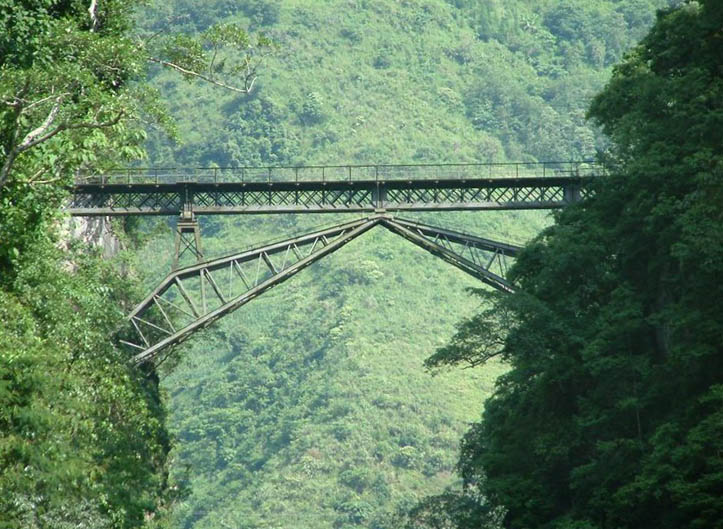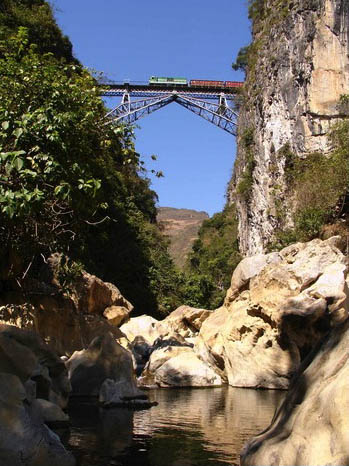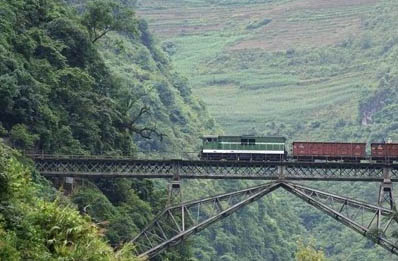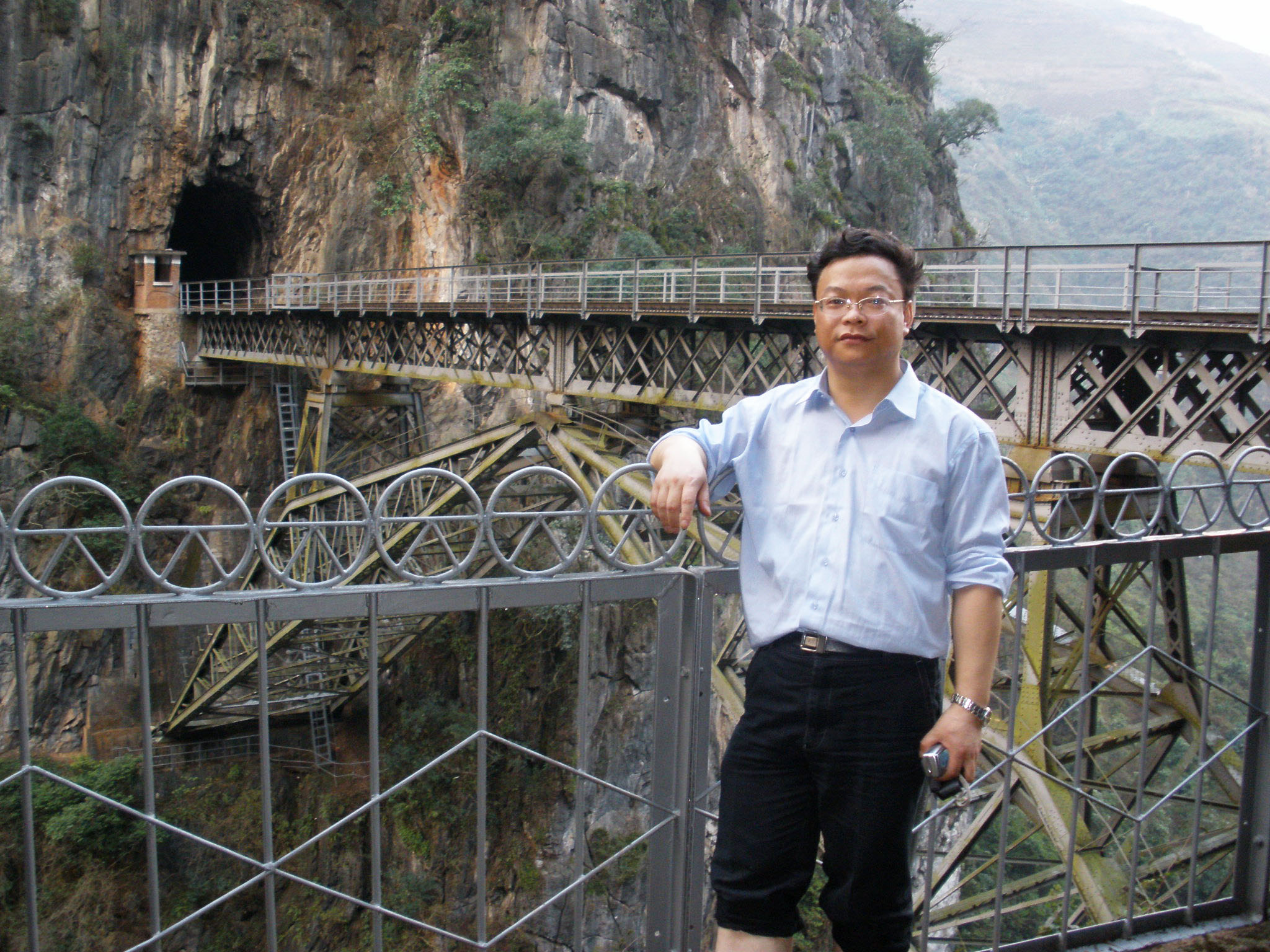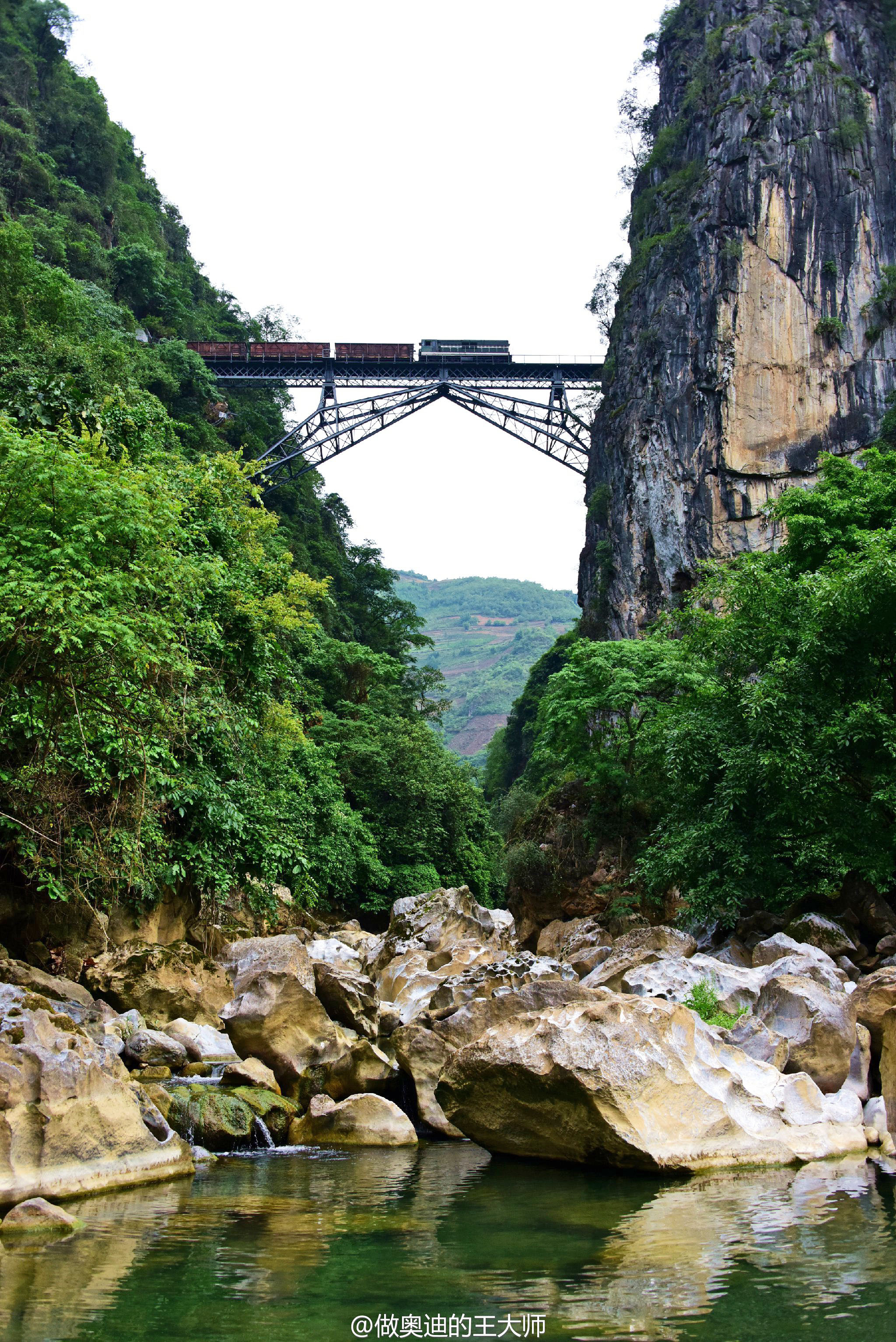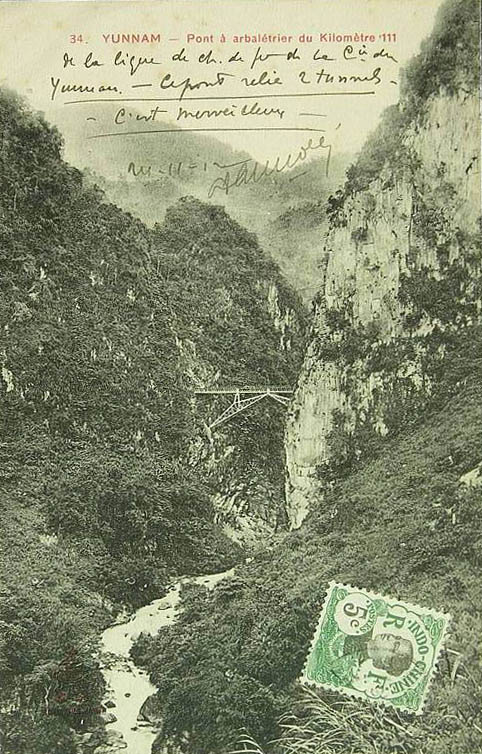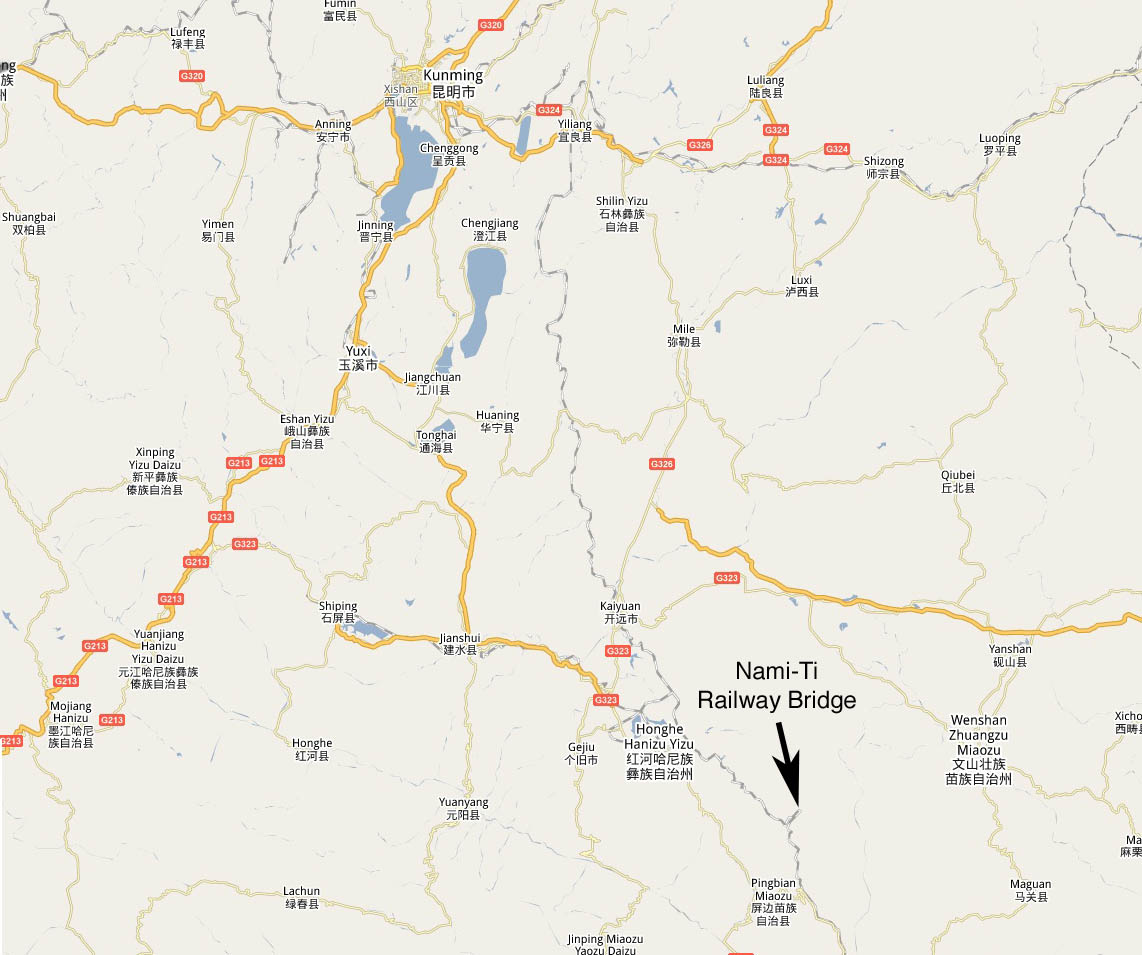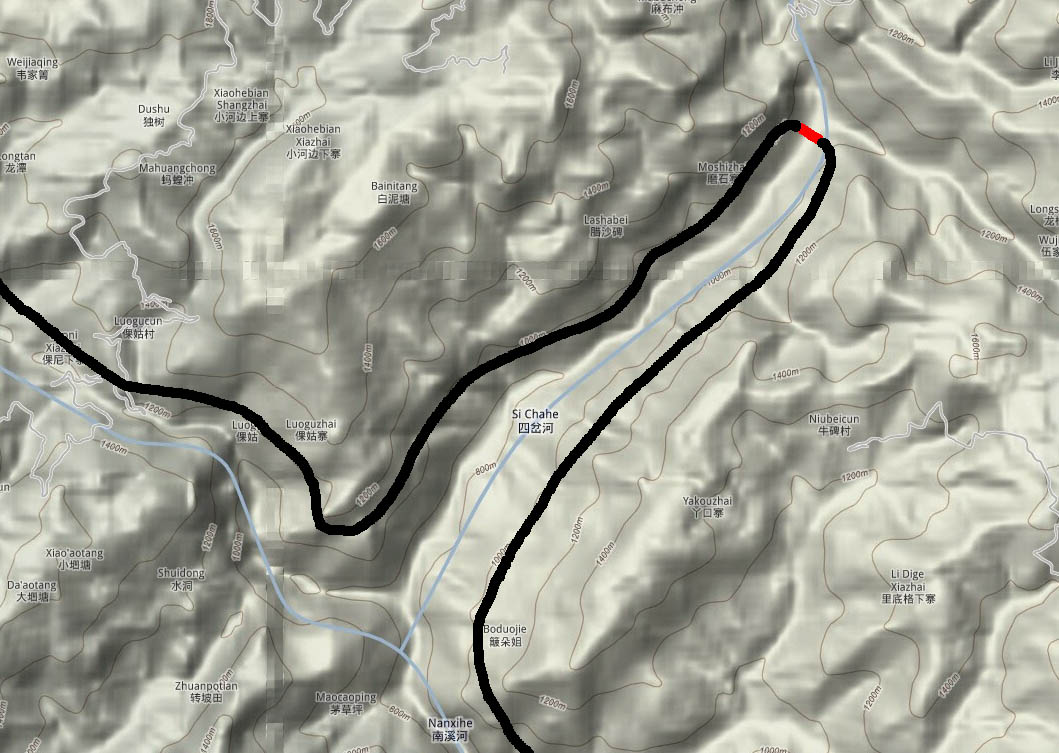Nami-Ti Railway Bridge
Nami-Ti Railway Bridge
Wujiazhai Railway Bridge
五家寨铁路桥
Wantangxiang, Yunnan, China
335 feet high / 102 meters high
180 foot span / 55 meter span
1909
One of the most famous railway bridges ever built in China, the 1909-built Nami-Ti Gorge Railway bridge was also China’s highest bridge for decades. One of the most difficult railway engineering projects of its time, construction began on the 289 mile (465 km) Kunming to Vietnam line in January of 1904 and continued for 6 years. Originally proposed by both the French and the British, the extreme topography eventually led the British to bow out. The French Yunnan-Vietnam Railway Construction Company recruited more than 60,000 Chinese laborers as well as 3,000 French, American, British, Italian and Canadian engineers. When it was all completed, 107 permanent bridges and 155 tunnels were built.
The Nami-Ti or ‘Wishbone’ bridge was the most spectacular of all, crossing high above the Sicha River in Yunnan’s rough Nanxi River valley region. The spectacular single span bridge leaps across a short gap between two tunnels. Supported by an odd looking 180 foot (55 mtr) 3-hinged arch, the French designed bridge consists of two triangular shaped trusses that were constructed on either side of the gorge above their respective hinges and then lowered down until they could rest on each other nearly 335 feet (102 mtrs) above the river. Located at kilometer 111, the bridge is still in use after 100 years. Locals often refer to it as the inverted ‘V’ bridge or the Wujiazhai bridge after the nearby town. There are many more photos and engineering drawings of the bridge as well as a detailed history of the entire line at the Kunming Railway Museum in downtown Kunming.
With the possible exception of Canada’s Pashleth Creek bridge, the Nami-Ti is probably the most difficult to reach of all of the world’s 100+ meter high bridges. After arriving in Yunnan Province’s capital city of Kunming, you must take a bus or taxi to Pingbian County where the bridge is located in North Wantang township between Boduqing and Luogu stations. The bridge is a 20 minute walk from the small village of Moshi Zhai. In addition to viewing the bridge from below there is a tunnel that goes up to the line where you can then walk out on the bridge. You may want to go with a regional guide. Good Luck!
中国曾经建成的最著名的铁路桥之一,1909年建成的纳米题大桥峡谷铁路桥也曾经是中国好几十年内最高桥梁。滇越铁路作为当时最困难的铁路工程之一,这条铁路从1904年元月开始从昆明向越南修建,共计6年时间,修建了289英里(465公里)。起初由法国人和英国人共同提议修建,但是由于极端困难的地形最终迫使英国人放弃了参建。法国印支铁路建筑公司招募了60000多名中国劳工以及3000名来自法国、美国、英国、意大利以及加拿大的工程师们。这条铁路竣工之后,他们共建成了107座永久性的桥梁和155条隧道。
纳米题大桥或者“叉骨”桥是这些大桥中最雄伟的一座,跨越云南崎岖的南溪河谷地区的四岔河。这座宏伟的单跨桥梁,跳跃式的跨过两个隧道之间的很窄的峡谷。支撑在一个看着很奇特的55米的三铰拱上,法国人设计的桥为双重式结构,下部为三铰人字拱,由两个等腰三角形桁架的拱臂组成,其底部支承于山腰的铸钢球形支座上;顶部合拢后联接于钢枢上,在水面之上102米高处。位于111公里里程点上,这座桥在一百余年之后的今天仍在使用。当地人常常称这座桥为“人字桥”或者以附近的小镇命名的五家寨大桥。
可能除了加拿大的帕希莱丝(音译)山涧桥之外,纳米题大桥很可能就是世界上100米以上高度的桥梁中最难以到达的了。在到达云南省会昆明之后,你必须做出决定是乘大巴或者是出租车到屏边县,大桥就位于该县的湾塘乡附近的度箐(波度箐)站与倮姑站之间,大桥大概在小村庄磨石寨(音译)20分钟距离远处。除了能在桥下参观之外,还有一个小隧道,可以上到铁路线上参观桥梁。到时候你可能就想找一位当地的向导了,祝好运!
Nami-Ti Railway Bridge location.
Rough outline of rail line path and Nami-Ti Gorge Railway Bridge.
